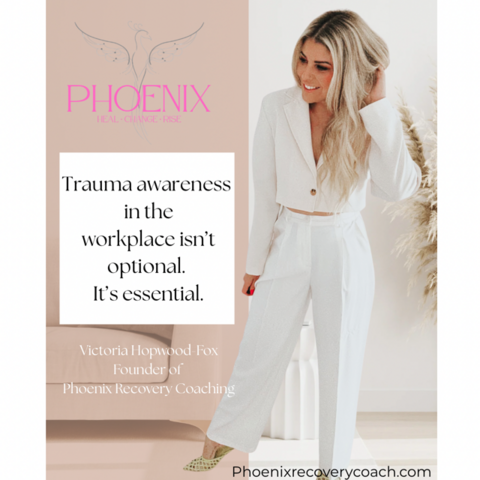
23 Sept 2025 ● Victoria Hopwood-Fox
Domestic Abuse IS a workplace issue and we need to stop pretending that it isn’t.

In this powerful and deeply personal piece, Domestic Abuse Recovery Coach and Workplace Consultant, Victoria, shares what it felt like to disclose domestic abuse in the workplace, only to be met with silence and discipline instead of compassion.
Her story highlights a painful truth: abuse doesn’t stay at home. It follows survivors into work, affecting health, focus, and safety.
With practical steps and a compelling reminder that workplaces can either reinforce silence or become a lifeline, it challenges leaders to step up and create cultures where survivors are supported, believed, and safe.
My story
When I finally spoke up about the abuse I was living through, I did it at work. I was exhausted from holding it all in and desperate for some kind of understanding. But instead of support, I was disciplined. I was told to “leave my home problems at home.” That moment shattered me. It confirmed what my abuser had been telling me all along; that nobody would believe me, and nobody would help me.
I walked away from that job, not because I wasn’t capable, but because my workplace wasn’t capable of supporting me.
And I know I’m not alone.
Abuse doesn’t stay at home
Domestic abuse doesn’t switch off at 9am and restart at 5pm. Survivors carry the weight of it everywhere, into the office, onto the shop floor, into Zoom meetings. It affects sleep, concentration, performance, confidence, relationships, and health.
When workplaces ignore domestic abuse, they’re ignoring a reality that affects millions of employees. They’re also ignoring the very real risks to safety, wellbeing, and even lives.
The cost of silence
Many employers think domestic abuse is “too personal” or “not their business.” But silence has a cost:
- Productivity drops when employees are exhausted, anxious, or distracted.
- Absenteeism rises due to injuries, court dates, or mental health struggles.
- Staff turnover increases when survivors feel unsupported and leave.
- Reputation suffers when organisations are seen as uncaring or unsafe.
But the human cost goes deeper. Every time a survivor is told to “leave it at home,” it reinforces shame and isolation. It tells them their pain doesn’t matter. And sometimes, that silence can keep them trapped in dangerous situations for longer.
Why workplaces must step up
Employers have both a duty of care and an incredible opportunity. Work may be the only safe space a survivor has. I know for me personally, work felt like the only place I could breathe, the only place I could imagine a different future. A supportive workplace can literally save lives.
Here’s what that looks like in practice:
- Clear, compassionate domestic abuse policies
- Training for managers and HR teams to recognise the signs and respond safely
- Confidential support channels and trusted points of contact
- Flexibility around time off for appointments, court hearings, or recovery
- Visible leadership commitment to making domestic abuse a workplace issue
Creating a culture of safety
Treating domestic abuse as a workplace responsibility isn’t just about preventing lost productivity. It’s about humanity. It’s about building a culture where employees know they will be believed, supported, and not punished for speaking up.
I’ll never forget being told my problems didn’t belong at work. But I’ve also seen what happens when workplaces get it right; when they step into the discomfort of these conversations and choose compassion over silence.
Those workplaces don’t just keep people employed. They keep people alive.
Final Thought
If you’re an employer or leader reading this, remember: domestic abuse is your business. You have the power to either reinforce someone’s silence or help them find their voice. Coming from someone who has lived in the silence for too long, please choose the latter.

About Victoria
Victoria is a trauma-informed Domestic Abuse Recovery Coach and Consultant, dedicated to empowering survivors of abuse to reclaim their confidence, boundaries, and future. Through her online coaching programs, she support individuals navigating the aftermath of coercive control, emotional abuse, and trauma bonds — offering practical tools, compassionate guidance, and structured recovery frameworks.
In addition, she also partners with businesses, HR leaders, and organisations to create safer, more responsive workplaces, delivering sessions on how to recognise signs of abuse, respond safely to disclosures, and help build policies that support employees experiencing domestic abuse.
Whether she's helping a survivor break the cycle or equipping a company to respond with care — her mission is the same: to transform silence into safety, and survival into strength.


